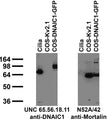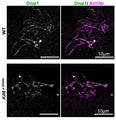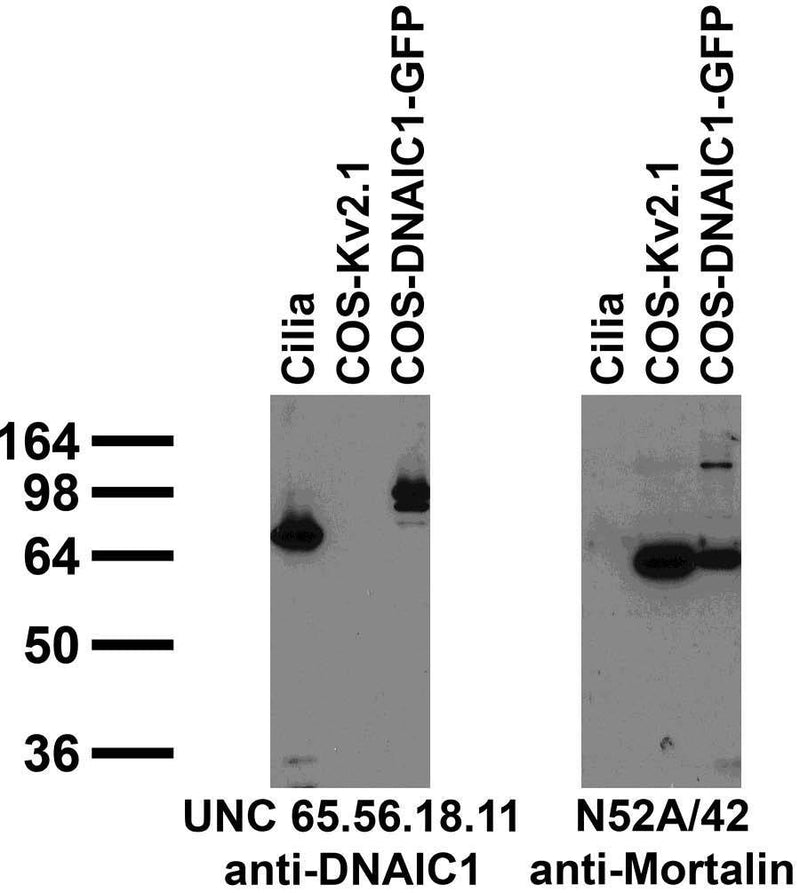Ships: 1-2 business days
Product Specific References for Applications and Species
| Immunocytochemistry: Human | ||
| PMID | Dilution | Publication |
| 35531639 | 1:1000 | Konjikusic, M.J., et al. 2023. Kif9 is an active kinesin motor required for ciliary beating and proximodistal patterning of motile axonemes. Journal of Cell Science, jcsw259535. |
| Immunohistochemistry: Human | ||
| PMID | Dilution | Publication |
| 33263282 | not listed | Lee, C., et al. 2020. Functional partitioning of a liquid-like organelle during assembly of axonemal dyneins. Elife, e58662. |
| Immunohistochemistry: Mouse | ||
| PMID | Dilution | Publication |
| 38235522 | 1:100 | Takagishi, M, et al. 2024. Motor protein Kif6 regulates cilia motility and polarity in brain ependymal cells. Disease Models & Mechanisms, . |
| 36149960 | not listed | Cho, J.H., et al. 2022. Islet primary cilia motility controls insulin secretion. Science Advances, eabq8486. |




